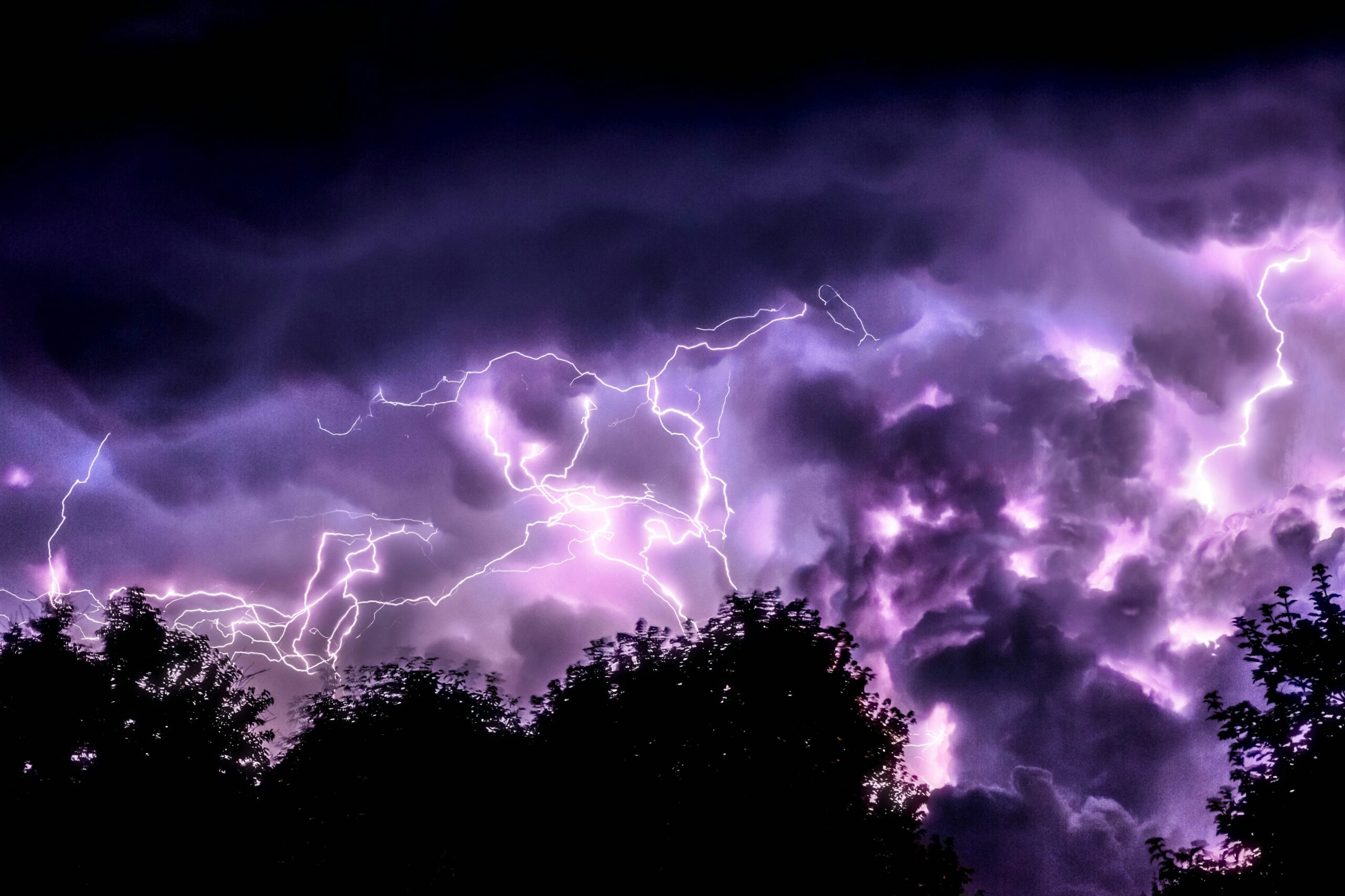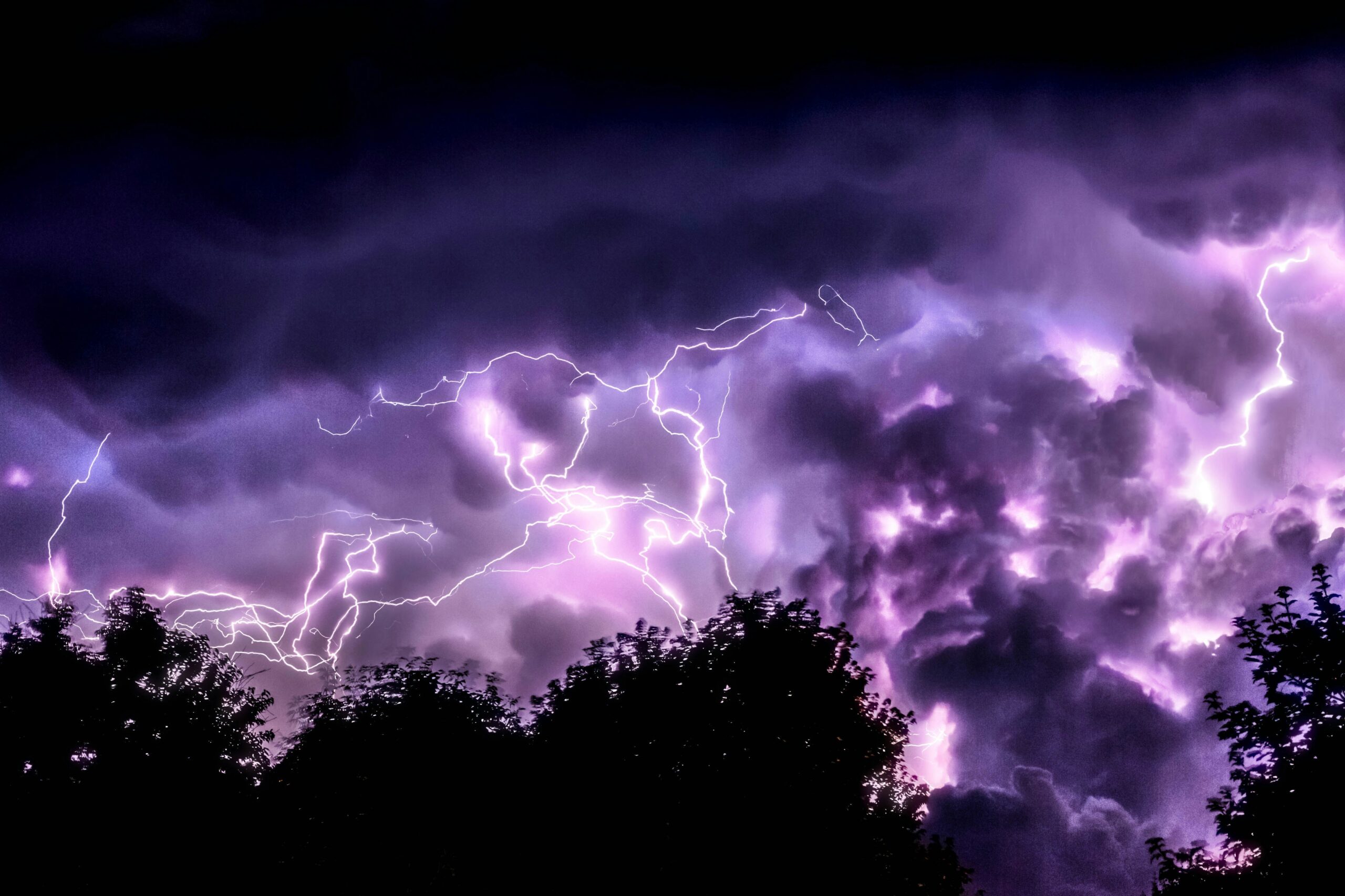Introduction to Weather Alerts in Ontario
Weather alerts play a crucial role in ensuring the safety and preparedness of residents in Ontario, particularly during adverse weather conditions such as snow squalls, blizzards, and wind storms. These alerts provide timely and essential information, allowing individuals and communities to take appropriate measures to protect themselves and their property from potential hazards. Understanding the nature and implications of these weather phenomena is vital for effective disaster management and minimizing risks associated with severe weather.
Organizations like Environment Canada and the Weather Network serve as pivotal resources for disseminating weather alerts. They utilize sophisticated meteorological tools and practices to monitor atmospheric conditions and generate alerts when dangerous weather patterns are anticipated. Through various communication channels, including websites, mobile applications, and social media, these organizations provide real-time updates and forecasts that are critical for public awareness. This proactive communication is particularly important given Ontario’s diverse and often unpredictable weather patterns.
The significance of weather alerts extends beyond mere notifications; they empower individuals, businesses, and municipalities to prepare for the worst. For instance, during a snow squall, which can result in sudden reductions in visibility and rapid accumulation of snow, being informed can make the difference in preventing accidents on the road. Similarly, blizzards, which can cause extensive disruption and require an emergency response, necessitate early warnings to facilitate evacuation plans and resource allocation. Wind storms, often accompanied by high gusts and potential property damage, also highlight the importance of being alert and ready to tackle ensuing challenges.
In light of these factors, it is evident that staying informed about weather alerts in Ontario is not just a matter of personal safety but also a collective responsibility. By engaging with the information provided by reliable sources, residents can significantly mitigate the risks associated with severe weather events.
What is a Snow Squall?
A snow squall is a weather phenomenon characterized by a sudden and intense burst of snowfall, often accompanied by brisk winds. These conditions can lead to significant reductions in visibility, making travel hazardous. Unlike a blizzard, which entails prolonged periods of heavy snowfall and severe winds, snow squalls typically occur over a shorter duration, often lasting for less than an hour. This brevity can cause drivers and pedestrians to underestimate the severity of the conditions, resulting in increased risks on the road.
The formation of snow squalls is generally linked to intense cold fronts moving through a region, which can trigger localized disturbances in the atmosphere. These disturbances cause moisture to condense rapidly, leading to the quick development of snowflakes. In Ontario, specific geographical features and seasonal weather patterns, particularly in winter months, can create ideal conditions for snow squalls. The interplay between cold air masses and warm, moisture-laden air can result in these brief yet intense snow events.
During a snow squall, it is common for visibility to drop dramatically, sometimes to less than 100 meters. Road conditions can deteriorate quickly as snow accumulates, and the combination of wind and snow may result in snowdrifts, making it difficult to navigate even for experienced drivers. The rapid onset of these storms can lead to confusion and unpreparedness among the population. Understanding snow squalls is crucial for residents and travelers in Ontario, as awareness of their potential hazards can enhance safety during these unpredictable winter events. When conditions are right for snow squalls, it is essential to heed weather alerts and prepare adequately for sudden changes in weather.
Understanding Blizzard Warnings
Blizzard warnings are issued when severe winter weather conditions are expected to create dangerous environments. The National Weather Service defines a blizzard as a specific weather phenomenon that combines strong winds, significant snowfall, and limited visibility. For a blizzard warning to be issued, certain criteria must be met. Generally, sustained winds or frequent gusts of 40 kilometers per hour (25 miles per hour) or greater must occur for at least four hours. Furthermore, visibility must be reduced to less than 400 meters (or a quarter mile) due to blowing and drifting snow.
The dangers posed by blizzards are significant and varied. One major risk associated with these storms is road closures. Accumulated snow as well as high winds can make driving hazardous, leading to the potential for accidents and delays. In some instances, authorities may be forced to shut down roads to protect public safety. Additionally, extreme cold temperatures often accompany blizzard conditions, which can lead to frostbite or hypothermia for those caught in the storm without adequate protection.
Preparation is crucial when a blizzard warning is issued. It is advisable to monitor local weather reports for timely updates and advisories. Residents should stock up on necessary supplies, such as food, water, medications, and other essentials, to minimize the need for travel during the storm. Ensuring that vehicles are equipped with emergency kits can also be instrumental in enhancing safety. These kits should ideally contain items such as blankets, extra clothing, food, water, a flashlight, and perhaps a small shovel. By understanding the criteria and dangers associated with blizzard warnings, individuals can better prepare themselves and their families for the upcoming winter storms that may affect Ontario. In conclusion, recognizing and responding to these warnings is fundamental for maintaining safety and preparedness.
Wind Storms: Causes and Effects
Wind storms are significant meteorological phenomena characterized by sustained high winds and strong gusts. They can arise from various atmospheric conditions, including low-pressure systems, thunderstorms, and the passage of cold fronts. The interaction between warm, moist air and cooler air masses is often a precursor to the development of these powerful winds. As cold air descends, it displaces the warm air, resulting in turbulent flow, which can generate damaging gusts that surpass typical wind speeds.
The effects of wind storms in Ontario can be far-reaching. Power outages are one of the most common consequences of these weather events. High winds can easily uproot trees and down power lines, leaving thousands without electricity for extended periods. In urban areas, the impact can be even more pronounced, with wind gusts exceeding 90 km/h causing widespread disruptions. Such outages not only affect household comfort but can also impact local businesses and emergency services.
Property damage is another significant consequence of wind storms. Buildings with weak roofing or siding may suffer structural harm, while debris propelled by high winds can shatter windows or dent vehicles. Homeowners and businesses may face costly repairs following a wind storm, underscoring the importance of preparing for such events through proactive maintenance and planning.
Additionally, hazardous travel conditions are often a byproduct of wind storms. Blowing debris on roadways, along with reduced visibility caused by heavy rain or snow accompanying strong winds, can contribute to dangerous driving scenarios. It is essential to differentiate wind storm warnings from snow-related alerts, as the criteria and recommended precautions vary significantly. Understanding wind speeds and gusts provides valuable insight into the potential severity of a wind storm, enabling residents to take appropriate safety measures during such occurrences.
The Role of Environment Canada and the Weather Network
In Ontario, weather alerts play a crucial role in ensuring the safety and preparedness of communities facing severe weather phenomena, such as snow squalls, blizzards, and wind storms. Two primary organizations responsible for issuing these alerts are Environment Canada and the Weather Network. Both entities utilize advanced meteorological data and technology to monitor weather conditions and provide timely information to the public.
Environment Canada is the governmental agency tasked with meteorological services and weather forecasting. It leverages various data sources, such as satellite imagery, radar, and ground-based weather stations, to analyze atmospheric patterns and predict severe weather events. By employing a sophisticated weather-monitoring system, Environment Canada can detect the onset of critical weather phenomena, issuing alerts to inform residents of pending hazardous conditions. Their alerts are categorized based on the severity and potential impact, helping the public understand the urgency of each situation.
Similarly, the Weather Network operates as a private weather forecasting service that complements federal efforts. They also aggregate data from multiple sources, including real-time weather observations, weather models, and user contributions, to provide localized forecasts. The Weather Network’s alerts are tailored to specific regions in Ontario, ensuring that individuals receive relevant and timely updates about imminent weather threats. By disseminating information through various channels, such as television, radio, and digital platforms, they ensure widespread public awareness.
It is imperative for residents to adhere to the advisories issued by both Environment Canada and the Weather Network. Following these alerts can significantly enhance safety measures, allowing individuals to prepare adequately for snow squalls, blizzards, and wind storms. By staying informed and acting upon the guidance provided, communities can mitigate potential risks associated with severe winter weather.
Regional Impacts of Snow Squalls and Wind Storms in Ontario
Ontario, with its diverse geography, experiences a variety of weather-related phenomena, notably snow squalls and wind storms. These events can significantly impact different regions, demonstrating varied degrees in intensity and resulting challenges. In Toronto, for example, the urban heat island effect can mitigate snow accumulation to some extent; however, when snow squalls do occur, they can disrupt transportation systems and lead to reduced visibility, frustrating commuters. Local government has established response protocols, including snow clearance operations and public advisories to ensure safety during these challenging weather conditions.
Moving north to Sudbury, the situation differs markedly. Sudbury’s location and elevation mean it is more susceptible to severe snow squalls, often receiving larger snow totals compared to southern Ontario. This can lead to challenges for local infrastructure, including road maintenance and public transport services. The city employs extensive winter maintenance plans to address these challenges, ensuring that major roads and transit routes are prioritized for snow removal. The municipality also conducts emergency management drills to prepare for potential disruptions caused by these severe weather events.
In Kingston, the proximity to Lake Ontario plays a pivotal role in influencing weather patterns. The city can experience intense wind storms, often exacerbated by the lake’s effect, which can lead to property damage and power outages. Local authorities have developed communication strategies to keep residents informed about impending storms and to coordinate efforts for power restoration and infrastructure repairs post-event. Similarly, Windsor is affected by wind storms, particularly in the fall and winter months, impacting its agricultural base and transportation networks. The regional government’s proactive approach to weather alerts and emergency planning assists residents and businesses in preparing for potential disruptions.
As Ontario continues to face the consequences of changing weather patterns, understanding regional impacts is crucial for effective preparation and response strategies against snow squalls and wind storms.
Preparing for a Snow Day: Safety Tips and Recommendations
Snow days can be both fun and challenging, especially in regions like Ontario where snow squalls and blizzards may occur. Adequate preparation can help ensure safety and comfort for individuals and families during such weather events. One of the first steps is to wear appropriate winter clothing. Layering is key; start with moisture-wicking base layers to keep sweat away from the skin, followed by insulating layers to retain body heat, and finish with a waterproof and windproof outer layer. Accessories such as hats, gloves, and scarves are also essential to protect extremities from frostbite.
Another vital preparation aspect is having an emergency kit ready. Essential items include non-perishable food, bottled water, batteries, a flashlight, a first-aid kit, and necessary medications. An emergency kit should be periodically checked to ensure all items are up-to-date and functional. It is also advisable to have additional supplies such as blankets and a portable phone charger, especially given the likelihood of power outages during severe winter storms.
Safe driving practices are crucial, particularly when snow conditions make road travel hazardous. If you must drive, ensure your vehicle is winter-ready with proper tires, antifreeze levels, and a full gas tank. Keep an emergency kit in your car, which should include items such as a shovel, sand or kitty litter for traction, jumper cables, and warm blankets. People should also stay informed by watching local news channels or using weather apps to monitor conditions before heading out.
In the event of power outages caused by snow storms, keep your refrigerator and freezer doors closed to preserve food as long as possible. Use flashlights or battery-powered lamps instead of candles to reduce fire risks. Avoid using generators indoors, and ensure they are at least 20 feet away from the home to prevent carbon monoxide poisoning. By taking these precautionary measures, individuals and families can navigate a snow day safely.
Understanding Bus Cancellations and Transportation Impacts
In Ontario, severe weather events such as snow squalls, blizzards, and wind storms can significantly disrupt public transportation services, particularly bus operations. Inclement weather creates hazardous travel conditions that often lead to cancellations and delays. School boards and transit authorities have protocols in place to assess weather conditions and make informed decisions to ensure the safety of passengers and operators alike.
When a snow squall occurs, characterized by short bursts of heavy snowfall and strong winds, the visibility may drastically decrease, creating perilous conditions for bus transport. Transit authorities rely on weather forecasts and real-time reports to determine if services should continue or be suspended. Similarly, in the case of blizzards, which involve prolonged periods of snowfall and extreme cold alongside wind gusts, the risk of stranded buses increases, prompting transit agencies to cancel routes proactively. Wind storms may complicate matters further, as high winds can down trees and power lines, making roads impassable.
Communication is essential during these weather events, as parents and commuters look for timely updates regarding service changes. Many school boards and transit authorities provide notifications through their official websites, social media channels, and text alert systems. Individuals can access these resources to stay informed about potential cancellations or delays and can also view alternate transportation arrangements that may be in place when regular services are suspended.
In addition, local news outlets often report on weather-related disruptions, providing broader coverage on the impact of severe weather on transportation. For those planning travel during adverse weather conditions, it is advisable to consistently monitor these resources, as timely updates are crucial for navigating potential disruptions effectively.
Conclusion: Staying Informed and Safe During Severe Weather Events
As winter approaches in Ontario, it is crucial to remain vigilant and informed about the various weather alerts that can impact daily life. In this blog post, we have explored significant weather phenomena, including snow squalls, blizzards, and wind storms, each with distinct characteristics and potential dangers. Understanding these weather events is fundamental for effective preparation and response, enabling individuals and communities to mitigate risks associated with severe weather.
Snow squalls, often brief yet intense, can lead to sudden reductions in visibility and dangerous driving conditions. Recognizing the signs of an impending snow squall allows residents to take necessary precautions, such as postponing travel or ensuring that emergency supplies are on hand. Conversely, blizzards are more prolonged events characterized by heavy snowfall and strong winds, which can cause widespread disruption and power outages. Maintaining awareness of blizzard warnings can help individuals plan for extended periods without power or access to crucial services.
Furthermore, wind storms, often accompanying winter weather events, possess their own risks, including falling trees and structural damage. Adequate preparation, such as securing outdoor objects and maintaining an emergency kit, remains essential in ensuring safety during these storms. Staying updated through reliable weather alerts enables people to make informed decisions and take timely actions in the face of severe weather.
In conclusion, knowledge is key when it comes to navigating the challenges posed by adverse weather conditions in Ontario. By understanding the nuances of snow squalls, blizzards, and wind storms, individuals can better protect themselves and their communities. Ultimately, prioritizing safety and preparation during winter storms will contribute to enhanced resilience in the face of Ontario’s harsh weather conditions.


